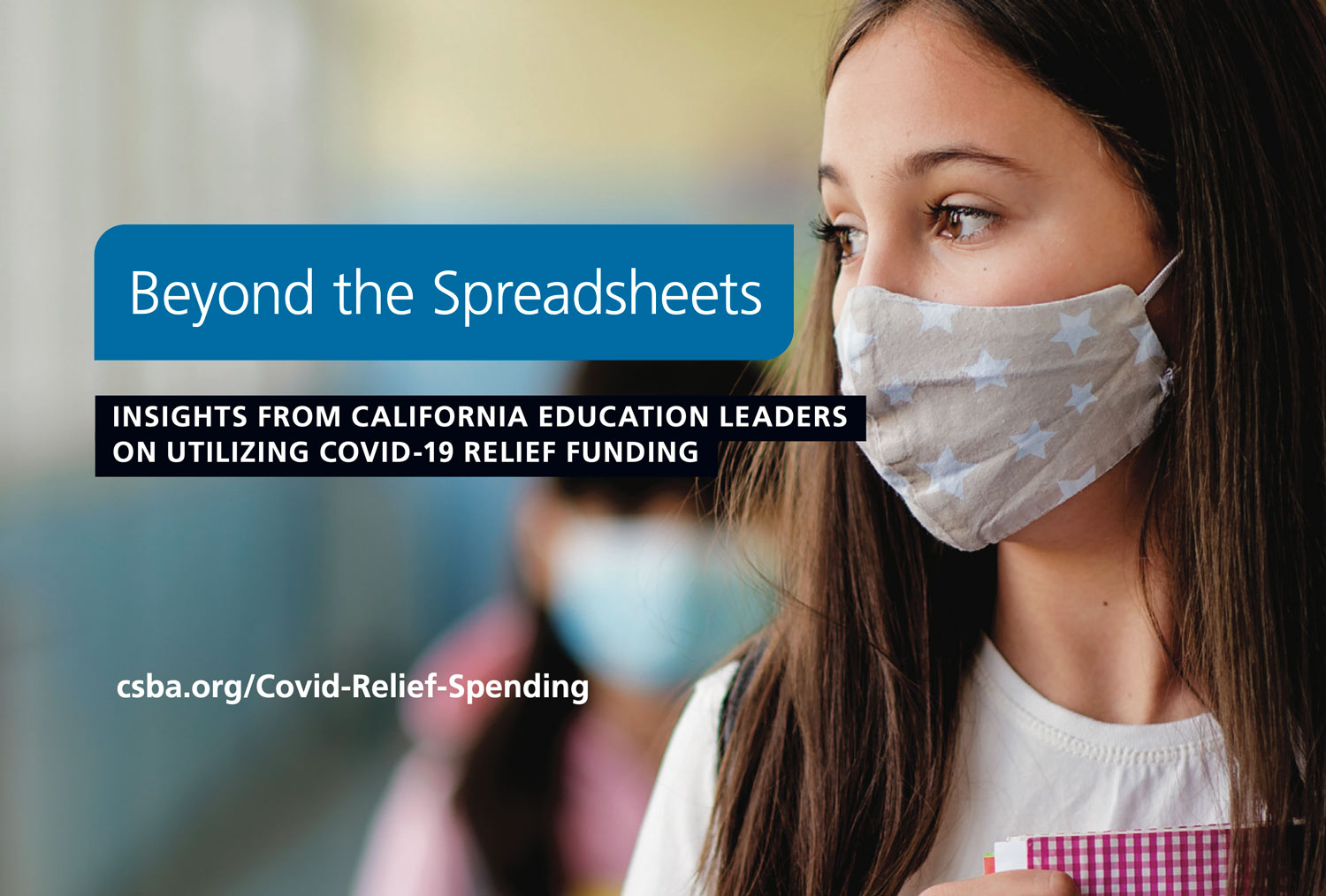The state and federal government have provided local educational agencies in California with historic sums of funding to help address the most critical challenges of the COVID-19 pandemic. This money continues to be essential for school districts and county offices of education to address health and safety issues, mental health concerns, social and emotional well-being, educational technology, and infrastructure improvements.
Although spending reports for federal relief aid have provided some information about how much money LEAs have spent and — very broadly — in what categories, they do not tell the whole story of school leaders’ experiences with this funding at the local level.
Survey respondents spoke to the essential nature of the funding for first facilitating distance learning and later for reopening schools for in-person instruction.
The findings from this survey are available in a report, Beyond the Spreadsheets: Insights from California education leaders utilizing COVID-19 relief funding, that highlights the extraordinary efforts of LEAs to address the wide range of priorities they continue to face in dealing with the impacts of the pandemic. Survey respondents spoke to the essential nature of the funding for first facilitating distance learning and later for reopening schools for in-person instruction.
At the same time, the funding came with challenges that have implications for future emergency aid packages. These challenges include staffing shortages, staff burnout, supply chain slowdowns and the complicated nature of combining multiple funding sources with different requirements. Beyond the Spreadsheets considers these challenges and offers feedback from LEA leaders to help mitigate the effects of future crises and improve future emergency aid packages.
This report is the second part of a CSBA series on COVID relief funding in California. Part one, Unprecedented Times, Unprecedented Responses, focused on how federal relief aid has been spent thus far.
“COVID-19 relief funding has been essential to LEA leaders as they provide students and school communities with the programs and services needed to overcome the impacts of the COVID-19 pandemic, try to regain academic ground and make new advancements,” said CSBA CEO & Executive Director Vernon M. Billy. “This report builds on CSBA’s prior report on federal relief funding and offers a first-hand glimpse at what decisions LEA leaders have faced and continue to grapple with as they navigate the important work of educating students.”
- Emergency relief funding was essential to allow school districts to continue operating and meet student and staff needs.
Survey participants continually noted how essential emergency aid was in addressing the needs of students and staff. The challenges brought on by the pandemic were unique and constantly changing, which means that students’ needs have also continually changed. The historic influx of emergency aid enabled school leaders to quickly address those needs to the best of their ability while keeping schools safe for in-person instruction.
- In the face of a historical educational crisis, school leaders focused on using relief funding to address students’ academic and social-emotional recovery.
Learning recovery and social-emotional supports were key concerns for respondents in the survey. School leaders discussed a wide range of expanded learning support programs that were enacted using relief aid, including before- and/or after-school programs, summer learning, expanded instructional days and years, content interventionists, academic support staff and other services. The learning recovery efforts highlighted by respondents cross multiple expenditure reporting categories, indicating that the complete picture of investments in these programs is much more nuanced than state and federal reporting captures.
- Mental health services and supports were a central theme for respondents.
Top of mind for most survey respondents was the trauma experienced by students, their families and school staff. District leaders realize that learning recovery is unlikely to succeed if students’ and staff’s social and emotional well-being is not prioritized. Schools used emergency aid to hire mental health professionals and created programs to help address trauma. Survey respondents also reported intense burnout among staff, many of whom were asked to take on additional responsibilities due to staffing shortages while dealing with their own mental health needs. Mental health services were among the programs that school leaders most feared they would have to cut when funding ends.
- School leaders faced significant challenges in spending and planning to spend emergency relief funding, and these challenges could be mitigated in future emergency aid programs.
Many of the challenges survey respondents faced related to using emergency aid came from external sources and the way the funding was structured. External factors that impacted spending included staffing shortages, supply chain disruptions and the burnout of staff who had already been stretched thin. Factors related to the structure of emergency funding included concerns about the sustainability of programs, and the demands of navigating multiple new categorical reporting requirements.
